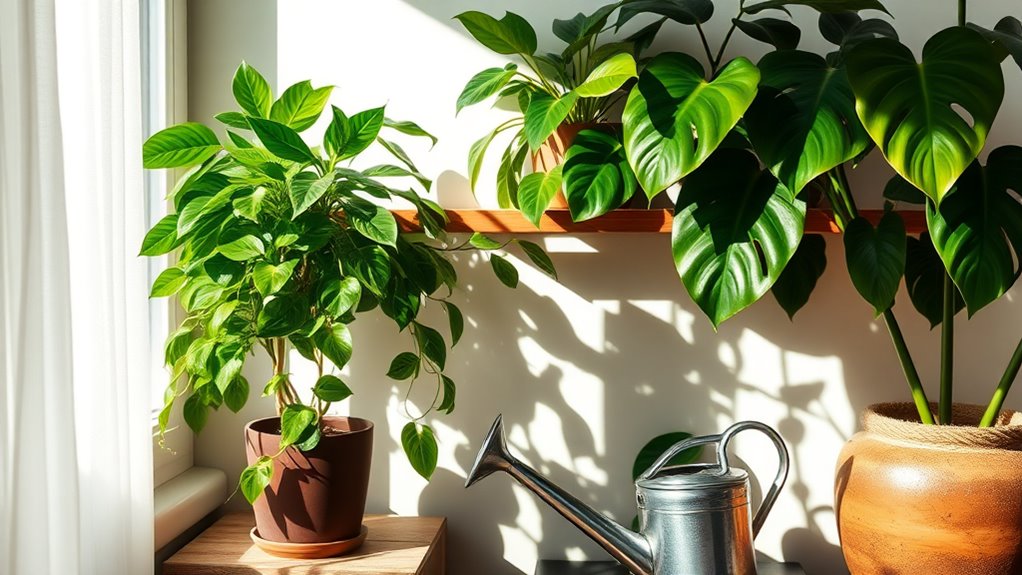I Kept My Indoor Plants Alive With This Simple Routine
To keep your indoor plants thriving, you need to understand their specific requirements. This involves observing their needs for light, water, and humidity. Establishing a watering schedule is crucial to prevent issues like over or under-watering. Besides that, providing adequate lighting and monitoring for pests can greatly impact their health. Each step plays a significant role in your plants’ growth, but what strategies can enhance their resilience even further?
Understanding Plant Needs
To successfully nurture indoor plants, you need to understand their unique needs.
Key houseplant tips involve recognizing different light requirements, humidity levels, and temperature preferences. Adapt your care routine based on these factors to ensure healthy growth. Additionally, different indoor plants thrive in specific soil types, which can significantly affect their overall health and development.
Observe your plants regularly for signs of stress or health issues, and adjust conditions as necessary. A tailored approach goes a long way in sustaining your indoor garden.
Establishing a Watering Schedule
A consistent watering schedule is crucial for maintaining the health of your indoor plants.
To establish this routine, assess the specific water needs of each plant species. Generally, watering every 1-2 weeks works well. Monitor soil moisture; if the top inch feels dry, it’s time to water. Always use room temperature water and ensure proper drainage to prevent root rot. Additionally, understanding the soil moisture levels is vital for preventing both overwatering and underwatering, leading to healthier plants.
Providing Adequate Light
While plants thrive on water, they also need adequate light to flourish and perform photosynthesis.
Position your plants near windows that receive bright, indirect sunlight. Rotate them regularly to ensure even growth. Consider using grow lights if natural light is insufficient.
Adding adequate light not only boosts growth but also contributes to the overall health of your plants.
- Boosts growth
- Enhances color
- Fosters resilience
- Creates a vibrant atmosphere
- Reduces stress
Regularly Checking for Pests
Even when your indoor plants seem healthy, regular checks for pests are essential to maintain their vitality.
Inspect leaves, stems, and soil for signs of infestations, such as webbing, holes, or discoloration. Use a magnifying glass to spot tiny insects like aphids or spider mites. Implementing natural pest control methods can also support your overall plant health.
Early detection allows for timely intervention, preventing significant damage and ensuring your plants thrive in a healthy environment.
Fertilizing for Healthy Growth
Fertilizing your indoor plants regularly is crucial for promoting robust and healthy growth.
Use a balanced fertilizer during the growing season to provide essential nutrients.
- Watch your plants thrive and flourish.
- Enjoy lush, green foliage.
- Experience vibrant blooms.
- Foster resilience against diseases.
- Feel accomplished as you nurture life.

